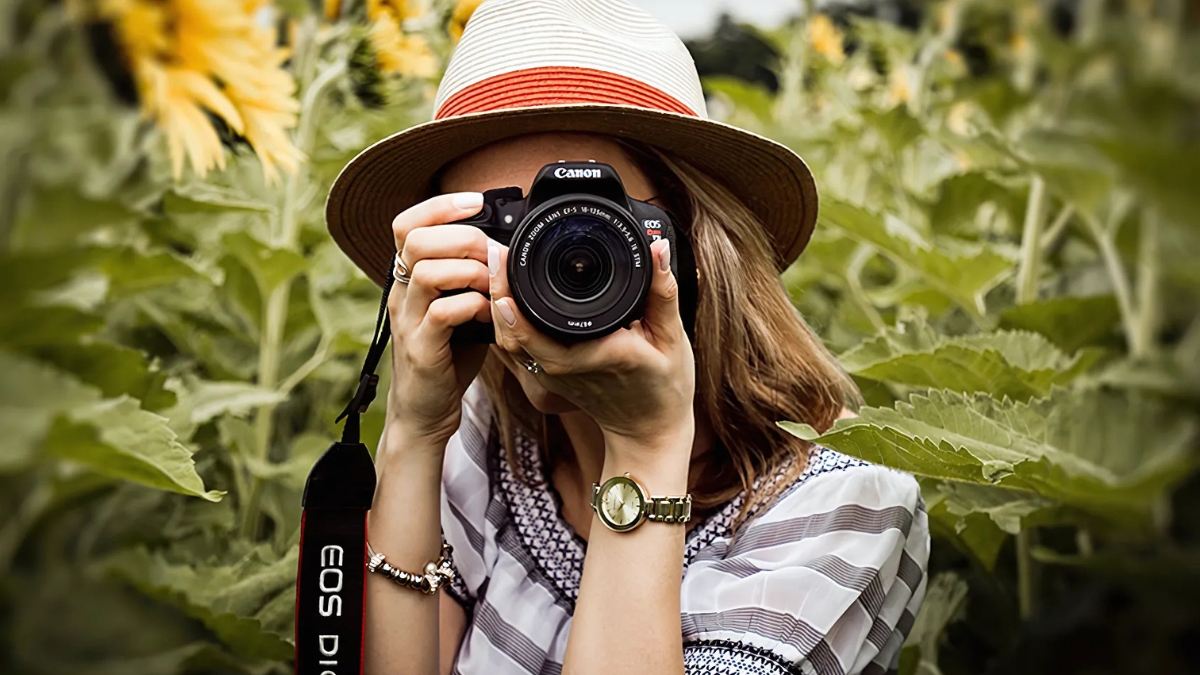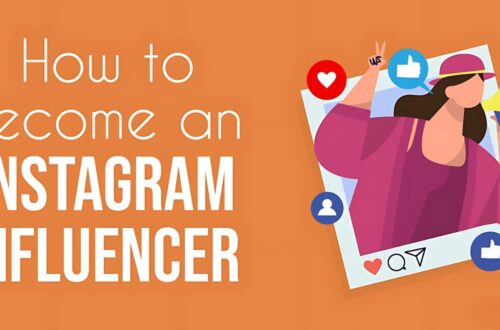
How to Make Passive Income Selling Stock Photos: A Photographer’s Complete Guide
Did you know that the global stock photography market is projected to reach $4.8 billion? I’ve been selling stock photos for over five years, and here’s the exciting truth: your camera could be your ticket to steady passive income! Whether you’re a professional photographer or just starting out, transforming your photos into a passive revenue stream has never been more accessible. Let’s dive into everything you need to know about making money while you sleep through stock photography!
Getting Started with Stock Photography
Here’s the real deal about equipment: while you don’t need a $3,000 camera to get started, you do need a decent DSLR or mirrorless camera that can shoot at least 16 megapixels. I started with a Canon 80D, which was perfect for stock photography. Most platforms require a minimum resolution of 4000×2600 pixels and crystal-clear image quality at 100% zoom. No amount of editing can fix a blurry photo, folks!
Speaking of platforms, let’s talk about the big players. Shutterstock has been my bread and butter – they’re the largest platform with over 2 million active buyers. Their initial review process is strict (they rejected my first 10 submissions!), but they accept JPEGs up to 50MB with minimum dimensions of 4MP. Adobe Stock is another goldmine, especially if you’re already using Creative Cloud. Then there’s iStock by Getty Images, Alamy, and Depositphotos, each with their own quirks and requirements.
Can we talk about metadata for a minute? This was a game-changer for me. Your amazing photos won’t sell if buyers can’t find them! I spent hours learning about keywording strategies. Here’s what works: include 25-35 relevant keywords per image, start with the most important ones, and use specific phrases like “business woman using laptop in cafe” rather than just “woman” and “laptop.”
One thing that tripped me up early on was understanding licensing. There are typically two main types: royalty-free (RF) and rights-managed (RM). Most beginners should stick with RF – it’s simpler and more popular with buyers. Just remember that if you’re shooting photos with recognizable people or private property, you’ll need proper model or property releases. I keep digital copies of all my releases organized in folders by shoot date.

For post-processing, consistency is key. I developed a basic workflow in Lightroom that includes:
- Lens correction and chromatic aberration removal
- White balance adjustment
- Exposure and contrast tweaking
- Noise reduction (especially important for stock!)
- Subtle sharpening (but not too much – over-sharpened images get rejected)
The biggest mistake I made starting out? Over-processing my images. Stock photo buyers generally prefer natural-looking photos that give them room to edit. No heavy HDR or crazy filters – keep it clean and professional.
Quick pro tip: shoot in RAW format. Yes, the files are bigger, but having that extra data to work with during editing is absolutely worth it. I can’t tell you how many times I’ve saved an otherwise perfect shot because I had the flexibility of RAW files.
Remember, stock photography is a numbers game. Don’t get discouraged if your first submissions get rejected – mine sure did! Keep refining your technique, study what sells on each platform, and most importantly, keep shooting. The more quality content you upload, the better your chances of generating meaningful passive income.
P.S. One thing I wish someone had told me: start building your portfolio with evergreen content. Seasonal photos are great, but images that are relevant year-round tend to sell more consistently. Think business concepts, lifestyle shots, and versatile backgrounds – these are the workhorses of any successful stock portfolio.
What Sells Best in Stock Photography
First, let’s talk about what’s consistently hot right now. Business and workplace photos are absolute gold, especially with the rise of remote work. But here’s the thing – buyers are tired of those cheesy “suit-and-tie people pointing at blank screens” shots. What’s really selling are authentic moments: someone working from their kitchen table, real-time video calls with kids popping in, or people working in coffee shops. I’ve found that my most successful business shots show genuine moments with a touch of imperfection.
The color schemes that consistently perform well might surprise you. While clean whites and modern blues dominate the business category (think tech company vibes), earthy tones are making a huge comeback. I’ve noticed my photos with warm, natural color palettes are getting 40% more downloads than those with cooler tones. There’s something about those muted greens, soft browns, and warm grays that buyers just can’t resist!
Let me share a quick story about profitable niches. I spent three months shooting nothing but food photos, thinking that was where the money was. Wrong! While food photos do sell, the market is incredibly saturated. Instead, I stumbled into a goldmine: wellness and mental health concepts. Photos showing stress management, meditation, and work-life balance are consistently my top earners. One simple shot of hands holding a herbal tea cup has earned me over $500 in passive income.
Here’s my current list of top-selling categories based on my portfolio analytics:
- Technology and innovation (especially AI and digital transformation concepts)
- Mental health and wellness scenes
- Sustainable living and environmental consciousness
- Diverse workplace scenarios
- Modern family dynamics
- Financial technology and cryptocurrency concepts
When it comes to composition, negative space is your best friend. I learned this after noticing that my images with ample copy space were selling 3x more than tightly cropped shots. Why? Because businesses need room for text overlays and graphics. My most successful composition technique is the rule of thirds combined with strategic empty space – usually on the right or top of the frame.

Seasonal planning has been crucial for my success. Here’s a pro tip that transformed my earnings: shoot seasonal content 6 months in advance. I messed up my first year by shooting Christmas photos in November – way too late! Now I have a calendar that reminds me to shoot:
- Summer lifestyle content in winter (indoor studio setups work great for this)
- Fall themes in spring
- Winter holiday content in summer
- Spring themes in fall
The biggest surprise for me? Abstract backgrounds and textures. These aren’t exciting to shoot, but boy do they sell! I spent one weekend photographing various marble surfaces, concrete textures, and bokeh effects. Those shots have become steady earners because designers always need background elements.
Here’s something not many people talk about: the power of mini-collections. Instead of random single shots, I now plan series of 10-15 related images. For example, I’ll shoot the same business scenario from multiple angles, with different poses and expressions. Buyers often purchase multiple images from a series to maintain consistency in their projects.
One last nugget of wisdom: watch the trends but don’t chase them blindly. When the pandemic hit, everyone rushed to shoot masks and hand sanitizer. Those who focused instead on remote work concepts created more sustainable content. My approach now is to identify trends early but shoot them in a way that could be relevant even after the trend passes.
Remember, the best-selling photos aren’t always the most artistic ones – they’re the most useful ones. Think like a marketing director: what images would you need to tell your brand’s story? That mindset has never steered me wrong in stock photography.
Optimizing Your Stock Photos for Maximum Sales
When I first started with keyword research, I made the rookie mistake of just listing obvious things like “woman” or “computer.” Total fail! Now I use a three-tier keyword strategy that’s dramatically improved my visibility. First tier is specific descriptive phrases (“young female entrepreneur working on laptop”), second tier is conceptual terms (“work-life balance,” “digital nomad lifestyle”), and third tier is technical aspects (“shallow depth of field,” “natural lighting”). I keep a spreadsheet of high-performing keywords for different categories – it’s saved me countless hours!
Here’s a real game-changer I discovered about titles: they need to tell a story. Instead of “Business Woman at Desk,” I use titles like “Female Startup Founder Planning Strategy in Modern Office.” My sales jumped 35% when I started using more detailed, story-driven titles! But here’s the catch – you need to front-load the most important keywords because some platforms cut off longer titles in search results.
Let’s talk about metadata – it’s not sexy, but it’s where the money is! I learned this cool trick with IPTC data: I embed location information even for indoor shots because some buyers specifically search by location. Also, I always include my website in the copyright field – you’d be surprised how many direct clients I’ve gotten from this simple addition.
One of my biggest time-savers has been developing a solid batch processing workflow. Here’s what works for me:
- Import photos to Lightroom with a preset that adds my basic adjustments
- Use the “Painter” tool to quickly apply common keywords
- Export with metadata templates I’ve created for different stock sites
- Use PhotoMechanic for bulk keywording (worth every penny!)
I used to spend hours processing each photo individually until I figured out this system. Now I can process and upload 100 photos in the time it used to take me to do 20!

Portfolio diversification was another eye-opener. Instead of just uploading one version of a shot, I now create multiple variations:
- Horizontal and vertical orientations
- Different crops for various use cases
- Color and black & white versions
- Multiple focal points of the same scene
Something weird I noticed – sometimes the version I think is worst ends up selling the best! It taught me that I’m not always the best judge of what buyers want.
The metadata optimization technique that really moved the needle for me was using “semantic clustering.” For example, if I’m uploading a photo of someone working from home, I’ll include related concepts like “remote work,” “telecommuting,” “home office,” and “flexible workplace.” This helps my images show up in more varied search results.
One mistake I made early on was being too stingy with keywords. Now I know that while you don’t want to keyword stuff, using all available keyword slots (while keeping them relevant) actually helps visibility. Just make sure every keyword truly applies to the image – nothing kills your credibility faster than irrelevant keywords!
Pro tip about batch processing: create separate export presets for each stock site. Shutterstock, Adobe Stock, and others all have slightly different requirements, and having dedicated presets prevents rejection headaches. I wasted so much time re-uploading photos before figuring this out!
Remember, optimization isn’t a one-and-done thing. I review my best-selling photos every quarter to understand what’s working. Then I apply those insights to optimize my older photos that aren’t performing as well. It’s tedious, but it’s helped me double my passive income without taking a single new photo!
Marketing Your Stock Photo Portfolio
Building a personal brand as a stock photographer seemed weird at first. I mean, who cares about the person behind stock photos, right? Wrong! I discovered that having a recognizable style and brand actually helps buyers find and trust your work. I created a simple portfolio website using my best-selling images and started blogging about my photo shoots. The funny thing is, companies started reaching out for custom shoots after finding my stock work!
Social media has been a game-changer, but not in the way I expected. Instead of just posting my photos, I started sharing behind-the-scenes content on Instagram. You know what happened? My “failed” shots and setup photos got more engagement than the perfect stock images! Now I do weekly Instagram Stories showing my process, and it’s brought in a solid following of both buyers and fellow photographers.
Here’s my content strategy that’s actually working:
- YouTube tutorials about my editing process
- Blog posts about stock photography tips
- LinkedIn articles targeting art directors
- Pinterest boards organized by photo themes
- Instagram Reels showing photo shoot setups
One of my biggest “aha” moments came from networking with other stock photographers. We started a small Discord group where we share trends and opportunities. Last month, someone in the group tipped me off about a company looking for specific types of lifestyle photos – I adjusted my shooting schedule and those images are now some of my best sellers!
Cross-platform promotion took me a while to figure out. The trick isn’t to post the same content everywhere – it’s about adapting the message for each platform. My LinkedIn posts focus on commercial applications of my photos, while my Instagram shows more artistic aspects. Pinterest has been surprisingly good for driving traffic – I create vertical pins with photo tips and link them to my portfolio.

Let me share a marketing experiment that totally flopped: I tried running Facebook ads directly to my stock portfolio. Complete waste of money! What worked instead was creating valuable content about photography and mentioning stock photo opportunities as part of the bigger picture. I wrote an article called “10 Ways to Make Money with Your Camera” that still brings in potential stock photo buyers every month.
The most valuable marketing tool has been my email list. I know, I know – email sounds so 2005! But here’s the thing: when I share my monthly photo themes and shooting schedule, art directors often reach out with specific requests. I’ve landed several exclusive licensing deals this way.
Content repurposing has been crucial for saving time. That YouTube tutorial about light setup? It becomes a blog post. The blog post? Turns into social media tips. Those tips? They become email newsletter content. Work smarter, not harder, right?
Networking tip that changed everything: join business groups, not just photography groups! Some of my best clients came from regular business networking events where I was the only photographer in the room. When companies need photos, they remember the photographer who explained stock photography to them over coffee.
One last thing about marketing that surprised me – transparency about earnings actually helped build trust. I started sharing monthly income reports (not exact numbers, but percentages and trends), and it attracted both buyers and photographers to my content. People appreciate honest insights about the industry.
Remember, marketing stock photos isn’t just about promoting individual images – it’s about building a trusted brand that clients return to again and again. It takes time, but the compound effect of consistent marketing is worth every effort!
Level up your digital marketing with SEO and Social Media Marketing EBook Sets! These in-depth guides provide actionable strategies to improve your search engine rankings, increase organic traffic, and create impactful social media campaigns. Learn how to optimize your content, engage your audience, and turn clicks into customers. Perfect for entrepreneurs, marketers, and businesses aiming for online growth. Start achieving your marketing goals today!
Maximizing Your Passive Income Potential
Here’s the deal with pricing: each platform has its sweet spot. When I first started on Shutterstock, I priced everything at their minimum level, thinking lower prices would mean more sales. Big mistake! I noticed that slightly higher prices actually led to more sales because they signaled higher quality. On Adobe Stock, I’ve found that their suggested prices work best, but on Alamy, pricing 20% above average performs better. It’s like each platform has its own personality!
Creating themed collections was a total game-changer for my income. Instead of random uploads, I now plan “mini-series” of 15-20 related photos. For example, my “Modern Remote Work” collection includes everything from home office setups to virtual meetings, all with consistent styling. These collections sell like crazy because buyers often need multiple photos for their projects! One of my collections about sustainable living has generated over $2,000 in passive income.
Let’s talk about tracking sales – this is where I got smarter about my business. I created a simple spreadsheet (nothing fancy!) to track which types of photos sell best on each platform. Would you believe that my coffee shop photos bomb on Shutterstock but are top sellers on Adobe Stock? Understanding these patterns helped me double my monthly income by uploading the right content to the right platforms.
When it comes to reinvesting, I made some interesting discoveries. My first instinct was to buy fancier camera gear, but you know what really boosted my income? Investing in good lighting equipment and backdrops. I spent $500 on a professional lighting kit that paid for itself in two months. The ability to shoot consistently any time of day was worth way more than a slightly better camera body.
Scaling up was tricky until I developed a system. Here’s what works for me:
- Shooting in batches (one full day of shooting = content for a month)
- Using templates for faster keywording and descriptions
- Outsourcing basic editing tasks while keeping creative control
- Planning shoots around trending topics 3-6 months ahead

One of my biggest revelations was about model diversity. After noticing that photos with diverse models consistently outperformed others, I started organizing monthly group shoots with models of different ages, ethnicities, and body types. Yes, it required more investment up front, but the returns have been incredible.
Time management has been crucial for scaling. I dedicate Mondays to shooting, Tuesdays to editing, Wednesdays to uploading and keywording, and Thursdays to marketing and analysis. This routine helps me maintain a steady flow of new content while keeping track of what’s working.
The most profitable decision I made? Starting to shoot video clips! I was hesitant because of the learning curve, but short video clips often sell for 10x what photos do. Even simple clips like someone typing on a laptop or stirring coffee can be consistent sellers.
Here’s something nobody talks about: the power of updating old content. Every quarter, I review my poorest-performing photos and either re-edit them with current trends in mind or retire them completely. This portfolio cleanup has actually increased my overall earnings by 25%!
Remember, passive income from stock photos isn’t really passive at first. It takes consistent work and smart strategy to build up a portfolio that generates meaningful income. But once you’ve got your systems in place? That’s when the magic happens. I now earn more from my stock photo business than I did at my previous full-time job, but it took two years of consistent effort to get here.
Quick tip: Always keep some of your earnings aside for taxes and reinvestment. I learned this the hard way when tax season first rolled around! Now I automatically set aside 30% of my stock photo income for taxes and future business expenses.
Starting your journey in stock photography doesn’t have to be overwhelming! With the right strategy and consistent effort, you can build a profitable passive income stream through your photographs. Remember, success in stock photography is a marathon, not a sprint. Start implementing these strategies today, and you’ll be well on your way to earning passive income while doing what you love!





